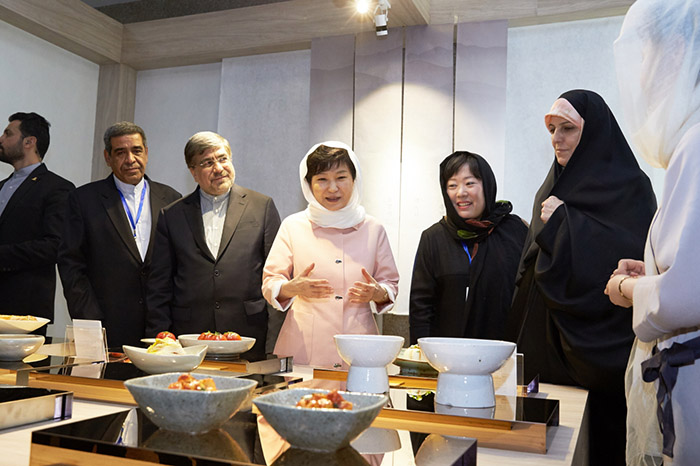
President Park Geun-hye (center) visits the Hansik Zone at the K-Culture Exhibit, held at the Milad Tower in Tehran, on May 2.
On a table are spread 10 varieties of kimchi, ranging from standard cabbage kimchi to ones made with sliced radish, pomegranates, tomatoes and onions.
This is a snapshot of the Hansik Zone, currently set up at the K-Culture Exhibit that opened its doors on May 2 at the Milad Tower in downtown Tehran. As part of "Korea Culture Week," and launched to coincide with President Park Geun-hye's state visit to Iran this week, the exhibit has been promoting many aspects of Korean traditions among the Iranian public.
The event organizers, aware of the huge fan base for Korean period dramas like "Jewel in the Palace" and "Jumong," put together an exhibit that gives Iranians a chance to experience Korea first-hand. At the event, scheduled until May 4, visitors can taste Korean cuisine, try on traditional Hanbok attire, make prints on traditional Hanji mulberry paper and get a checkup from a doctor of traditional Korean medicine.
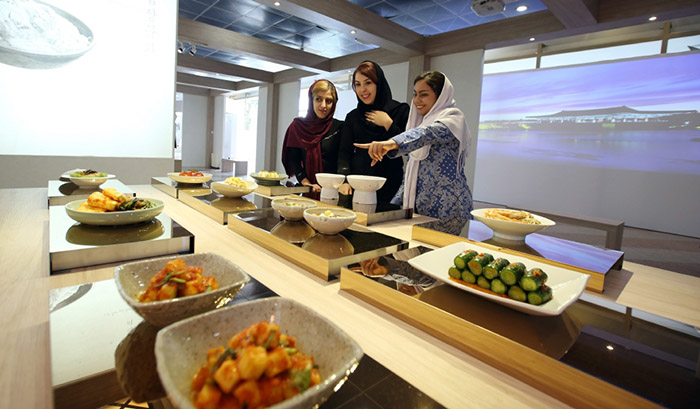
On May 2, a group of Iranian university students check out the kimchi on display at the K-Culture Exhibit, held at the Milad Tower in Tehran.
On opening day, the Hansik Zone at the exhibit was packed with visitors who lined up to sample the 10 different types of kimchi, all made with halal certified ingredients. On the table were cabbage kimchi, baek kimchi, a cabbage kimchi made without red pepper flakes, kkakdugi, sliced radish kimchi, and chonggak kimchi, made with baby radishes. In another corner, a chef demonstrated different ways to prepare kimchi using ingredients commonly sold in Iran, like tomatoes, onions and pomegranates. Visitors were also able to try 10 different Hansik dishes, like traditional Korean snacks made with nuts, japchae, a glass noodle dish, gangjeong, fried glutinous rice crackers, and Korean-style braised short ribs.
Upon visiting the Hansik Zone, President Park Geun-hye said, "It was impressive to see Hansik dishes like kimchi holding their place here at the crossroads between Korea and Iran. The fact that there are recipes for Iranians that allow them to make kimchi using local ingredients like onions and tomatoes, shows that our two culinary traditions are quite compatible."
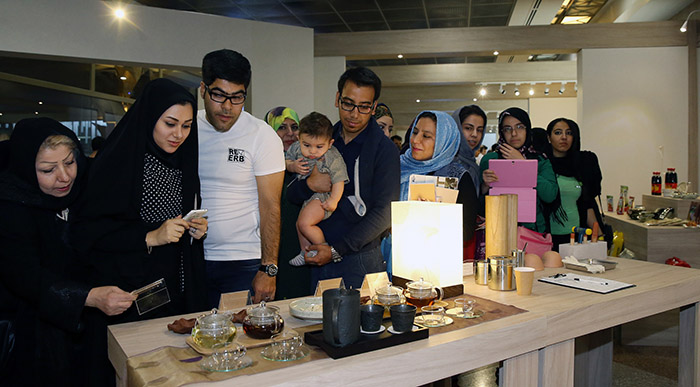
Visitors look at a display of traditional Korean teas at the K-Culture Exhibit on May 2.
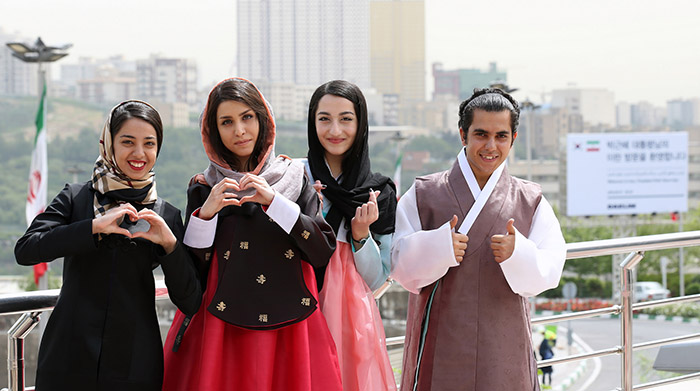
Iranian university students in traditional Hanbok attire express their love for Korea by making heart shapes with their hands.
Other sections of the exhibition space enticed visitors with traditional Korean medicine, colorful Hanbok garments and Hanji printing workshops. A doctor of traditional medicine could be seen feeling the pulse of a patient and giving a quick diagnosis. In another corner, Iranian students tried their hand at traditional arts and crafts, decorating bowls and printing tulip and hibiscus patterns -- the national flowers of Iran and Korea, respectively -- onto mulberry Hanji paper.
The exhibit attracted around 3,000 visitors on its opening day. Shabnam Yazdani, a student at the Iran University of Science and Technology, said, "It was amazing to try on Hanbok in real life, after having seen it only on TV all this time. I feel like there are many similarities between the cultures of Korea and Iran. I think this is why it's easy for Iranians to appreciate Korea."
By Lee Hana
Korea.net Staff Writer
Photos: Cheong Wa Dae, Jeon Han
hlee10@korea.kr
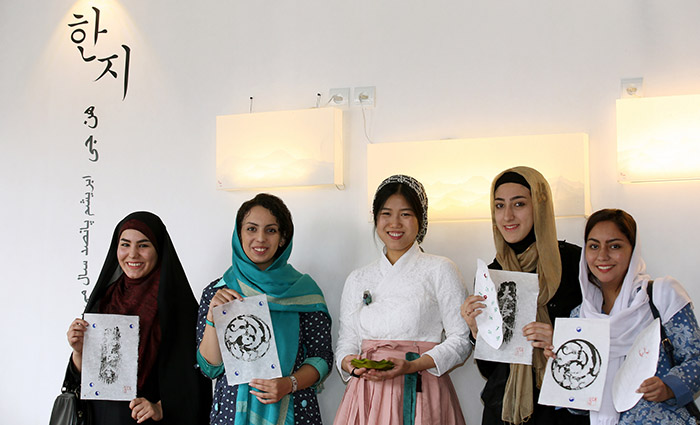
As part of the ongoing K-Culture Week festival at the Milad Tower in Tehran, visitors show off their Hanji ink prints made during a Hanji and paper arts workshop on May 2.
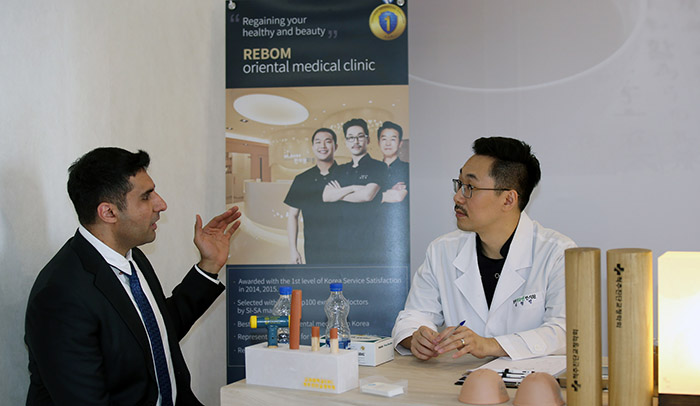
A visitor undergoes a brief medical checkup by a doctor of traditional Korean medicine at an Oriental medical clinic set up as part of the K-Culture Week festival at the Milad Tower in Tehran on May 2.
Most popular
- Grammy-winning producer calls Suga of BTS 'amazing artist'
- 'Universal love, family' themes fuel success of 'King of Kings': director
- Council sets minimum hourly wage in 2026 at KRW 10,320
- Expansion of foreign app system raises tourist convenience
- Nat'l population diversity rose nearly 8% from 2018-22: study
